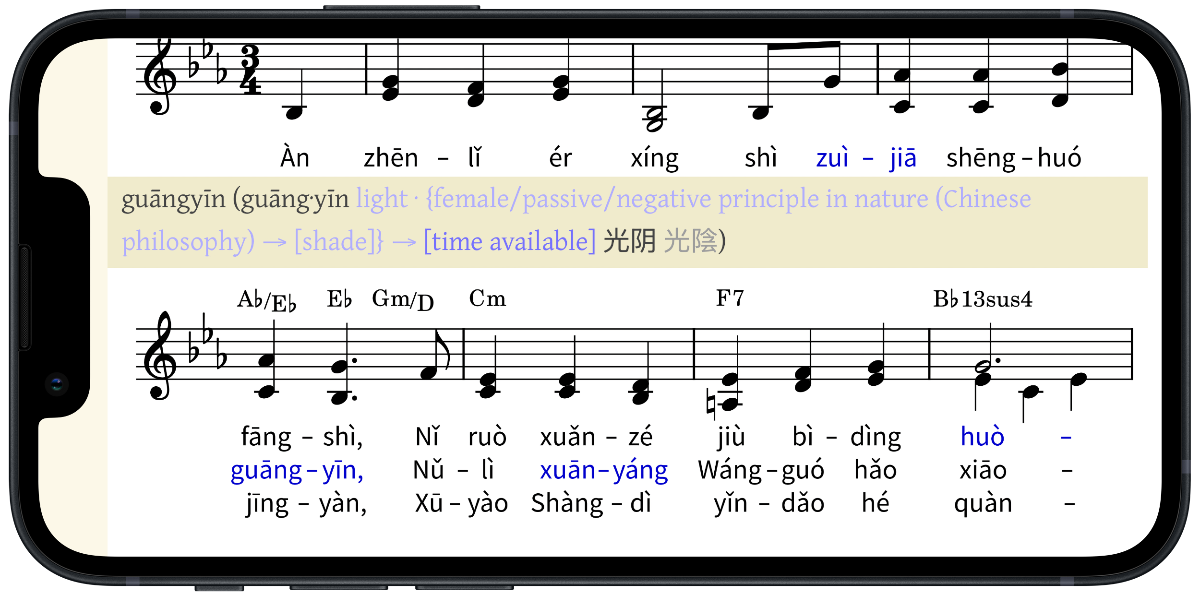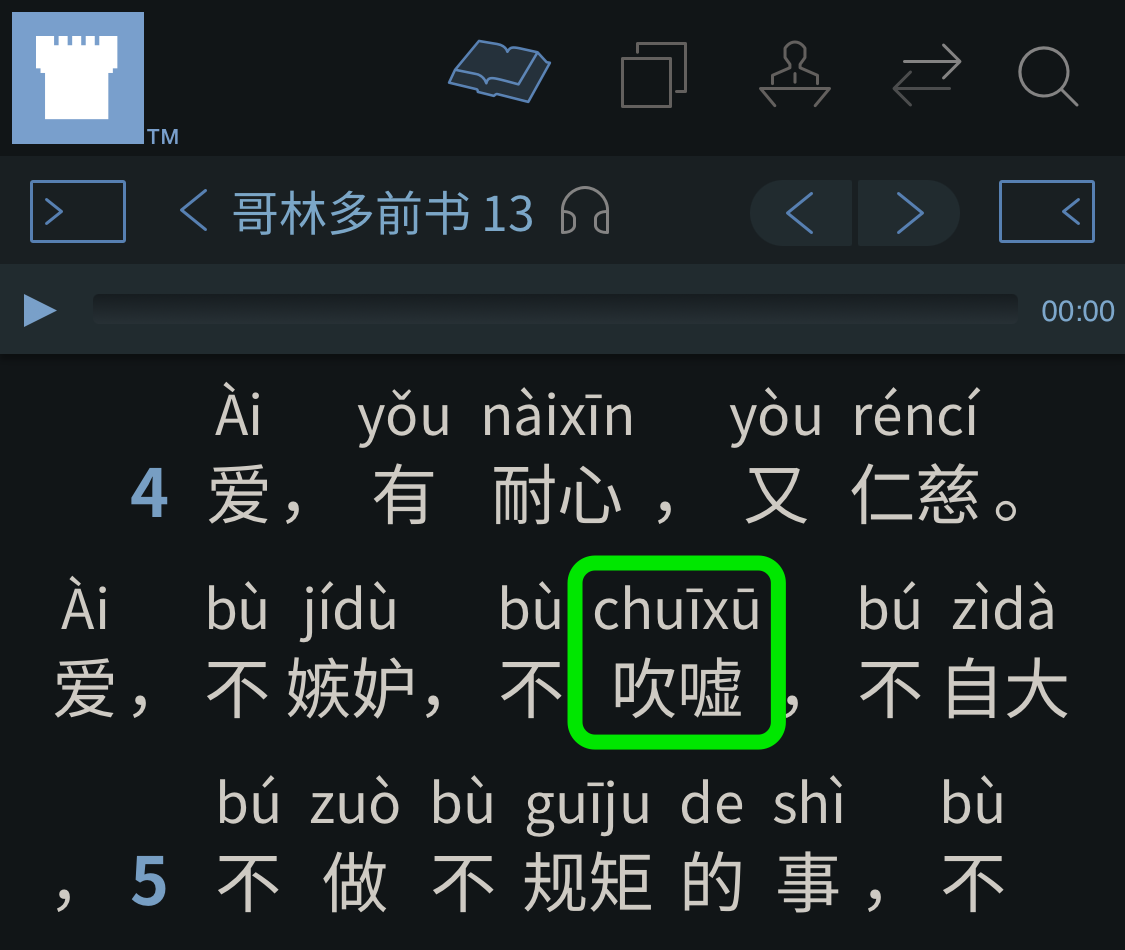qūshǐ (qū·shǐ {spur on (a horse) → [urge on]} · make; cause → [prompt; urge; spur on] 驱使 驅使) 👈🏼 Tap/click to show/hide the “flashcard”
[Notes: Tap/click on a Pīnyīn (Pīn·yīn {Piecing Together of} · Sounds → [Pinyin] 拼音) expression to reveal its “flashcard”; tap/click on a “flashcard” or its Pīnyīn (Pīn·yīn {Piecing Together of} · Sounds → [Pinyin] 拼音) expression to hide the “flashcard”. 📖 📄 📘 icons mean 📖 Reveal All, 📄 Reveal Advanced, and 📘 Reveal None re all the “flashcards” in the heading, paragraph, etc. that they are placed at the beginning of.]
The Shēngmìng Láizì Chuàngzào Ma? ((Shēngmìng Life 生命) (Lái·zì Came · From 来自 來自) (Chuàng·zào Initiating · {Making, Creating} → [Creating] 创造 創造) (Ma [? ptcl for “yes/no” questions] 吗 嗎)? → [Was Life Created? (lc)]) (Was Life Created? (lc)) brochure and the Shēngmìng de Qǐyuán—Zhíde Sīkǎo de Wǔ Ge Wèntí ((Shēngmìng Life 生命) (de ’s 的) (Qǐ·yuán {Rising → [Starting]} · Source → [Origin] 起源/原)—(Zhí·de Worth · Getting → [Worth] 值得) (Sī·kǎo {Thinking About} · Examining 思考) (de ’s 的) (Wǔ Five 五) (Ge [mw] 个 個/个) (Wèn·tí Asking · Subjects → [Questions] 问题 問題) → [The Origin of Life—Five Questions Worth Asking (lf)]) (The Origin of Life—Five Questions Worth Asking (lf)) brochure were originally published back in 2010, but relatively recently, the English version of the Was Life Created? brochure was updated to the December 2022 Printing, and the Mandarin version of it was updated to the February 2023 Printing. Also, the Was Life Created? brochure and the Origin of Life brochure are now in the Teaching Toolbox section in the JW Library app. So, it would be good to consider some of the expressions used in the Mandarin versions of these publications that can be so helpful when discussing whether life was created.
Prompt
This week’s MEotW, which appears in the section of the Mandarin Was Life Created? brochure entitled “Nǐ (You 你) Xiāngxìn (Xiāng·xìn It · {Do Believe} → [Do Believe] 相信) Shénme (Shén·me What · [suf] 什么 什/甚麼) Ne ([? ptcl] 呢)?” (“What Do You Believe?”), is “qūshǐ (qū·shǐ {spur on (a horse) → [urge on]} · make; cause → [prompt; urge; spur on] 驱使 驅使)”:
It is our hope that this brochure will prompt you to examine again the basis for some of your beliefs.
Mandarin (WOL; Pīnyīn (Pīn·yīn {Piecing Together of} · Sounds → [Pinyin] 拼音) Plus)
📖 📄 📘 Wǒmen (Wǒ·men we · [pl] 我们 我們) xīwàng (xī·wàng hope · {gaze (into the distance) at (that) → [hope]} → [hope] 希望) běn ({root or stem of a} → [this] 本) cèzi (cè·zi brochure · [suf for nouns] 册子 冊子) néng ({will be able} 能) qūshǐ (qū·shǐ {to spur on (a horse) → [to urge on]} · {to cause} → [to prompt] 驱使 驅使) nǐ (you 你) chóngxīn (chóng·xīn again · newly 重新) xiǎngxiang (xiǎng·xiang {to think about} · {to think about} 想想) zìjǐ (self 自己) de (’s 的) kànfǎ (kàn·fǎ {looking at (some things)} · way 看法) yǒu ({does have} 有) shénme (shén·me what · [suf] 什么 什/甚麼) yījù (yī·jù {being relied on} · evidence → [basis] 依据 依據).
While the first morpheme in “qūshǐ (qū·shǐ {spur on (a horse) → [urge on]} · make; cause → [prompt; urge; spur on] 驱使 驅使)” seems to have originally had a literal meaning of “spur a horse on”—as hinted at by the “马/馬 (horse)” radical/character component in it—in the context of “qūshǐ (qū·shǐ {spur on (a horse) → [urge on]} · make; cause → [prompt; urge; spur on] 驱使 驅使)” it’s used to mean “urge on”. (Interestingly, this morpheme is also used in “xiānqū (xiān·qū {in advance} · {drives (a horse/car/etc.) → [runs quickly]} (person) → [pioneer] 先驱 先驅)” (“pioneer”), in which it probably has an effective meaning of “runs quickly”.) Combined with “shǐ (causing; making | using | sending | envoy | if 使)”, which in this context means “make” or “cause”, we get an effective meaning of “urge”, “spur on”, or “prompt”, as shown in the above example.
Bearing Witness in Mandarin
As the Was Life Created? brochure says, our objective in talking to people in the Mandarin field about whether life was created is just to prompt or encourage them to think about why they believe what they believe about this subject. That’s why we’re called Jehovah’s Witnesses—we bear witness and testify regarding the evidence.—Isaiah 43:10–12.
Of course, in the Mandarin field, we need to do this using the Mandarin language. Let us be prepared, not just to read Chinese characters from a page or a screen 📱, but to actually talk with people in Mandarin and help them understand the evidence that the Creator exists, and that he will through his Kingdom government make this earth into a peaceful paradise, without the wars, natural disasters, and other problems that we see around us today.
While evolution/creation can be a relatively technically challenging subject to talk to people about, especially in Mandarin, thankfully, Jehovah and his organization have provided excellent tools like the Was Life Created? brochure, the JW Language app (iOS/iPadOS, Android, Microsoft Store), etc. to help us. In general, the technology, tools, and resources now available to help with Mandarin language learning are also better than ever. (Links to some Mandarin field language-learning resources can be found here.) Let us each move forward with a positive attitude on our own personal Mandarin-learning journey, and not be held back by the traditions and limitations of the past.
For convenience:
The direct link for the current-generation Pīnyīn (Pīn·yīn {Piecing Together of} · Sounds → [Pinyin] 拼音) Plus resource for the Was Life Created? brochure is:
The short link for Chinese field language-learning links for the Was Life Created? brochure is:
More Pīnyīn (Pīn·yīn {Piecing Together of} · Sounds → [Pinyin] 拼音) and Pīnyīn (Pīn·yīn {Piecing Together of} · Sounds → [Pinyin] 拼音) Plus web material based on the Mandarin Was Life Created? brochure will be made available in the Pīnyīn (Pīn·yīn {Piecing Together of} · Sounds → [Pinyin] 拼音) Plus web resource as time allows.


